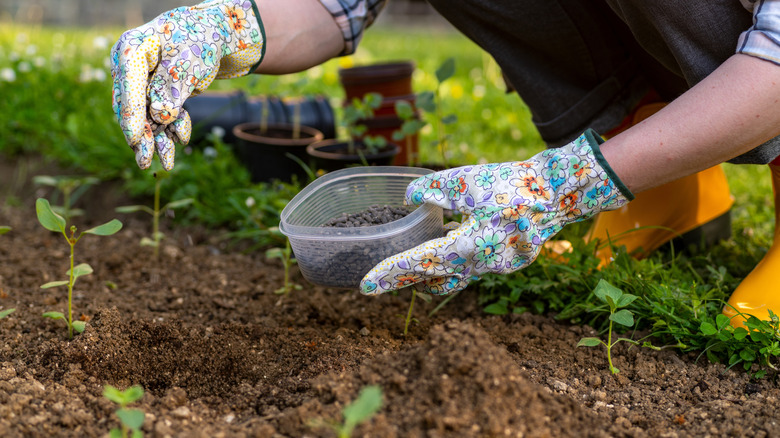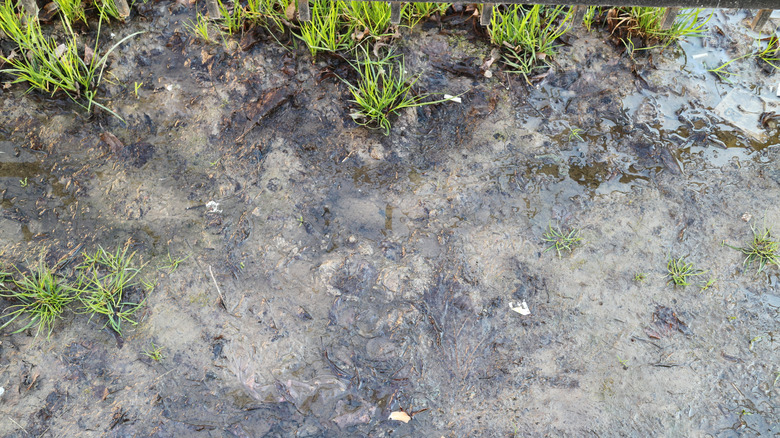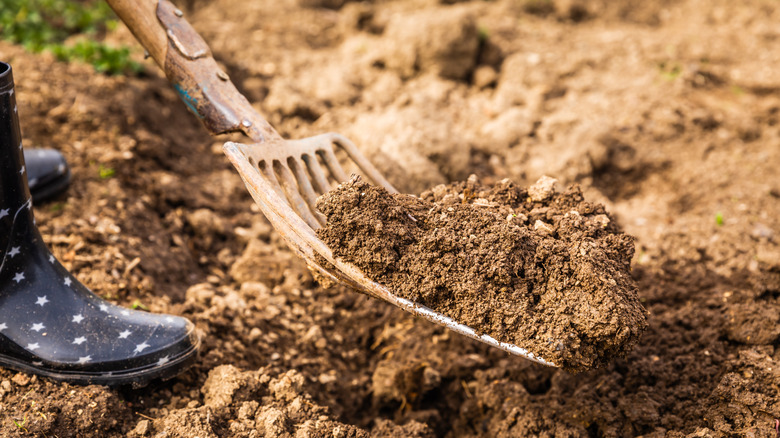If Your Garden Soil Is One Of These Colors, You Might Have A Problem On Your Hands
Most of us probably don't give much thought to the color of our garden soil. We often take for granted that it's a rich brown color and pay more attention to the color of our grass or the leaves on our plants as a sign of potential issues. However, the color of your garden soil can be an important indicator of its health — and the health of the plants that grow in it — so it shouldn't be overlooked. Gray or green soil is a particularly concerning sign because it typically indicates that the soil has been in prolonged contact with water and has become waterlogged.
Figuring out what your garden's soil color really means is crucial to protecting your plants from potential damage. While most soil is a tan or brown color, scientists rely on the Munsell color system to determine the precise color of a particular sample. Normal, healthy garden soil may be brown, but some soils are formed from rocks that give them an unusual color. However, other factors, such as iron oxide or organic materials present in the soil, can change its color. Prolonged contact with water can also alter its color, turning it gray, green, or dull blue.
Gray or green soil is usually waterlogged
It may seem like a minor detail, but the way you water your garden may be ruining your soil. Gray, gray-blue, or green soil typically indicates that the area has become waterlogged, suggesting that you've overwatered your garden or that the soil has poor drainage. The soil changes color because it doesn't have sufficient oxygen. This lack of air allows the iron and manganese present in the soil to form compounds that give a pale gray or green hue.
Plants in waterlogged soil usually show signs of damage quickly because their roots are deprived of oxygen. Poorly drained soil inhibits the roots' ability to get oxygen because water fills the spaces between the soil particles where oxygen is usually found. If the roots don't receive the necessary oxygen, they are unable to absorb water and other nutrients for the plant. As a result, root failure is one of the most common reasons that plants become stressed and die. Signs of waterlogged soil include wilted plants, rot at the base of the plants, and slowed overall growth.
How to fix gray or green soil
Improving its drainage is the best way to deal with gray or green waterlogged soil. In most cases, the first step should be amending the soil with organic material. Mixing organic matter into the soil helps break it up, creating channels that allow water and air to move through it more freely.
Compost is generally considered the best soil amendment for improving drainage, but peat moss and manure are other effective options. While determining the exact amount of compost your soil needs can be tricky, it generally requires mixing in a 2- to 4-inch layer into your soil at a depth of at least 6 inches for the best drainage results. Use a shovel or a garden fork to work the compost into the soil, but be careful not to overwork the soil, or you may break up the soil particles that form the channels for water and air to move through.
If amending the soil with compost doesn't improve its drainage, raised garden beds are an effective alternative. Because the beds are higher than the waterlogged soil that surrounds them, it's easier for water to drain from them, even in areas with heavy rainfall. You can also fill the beds with soil that drains well naturally to further protect your plants.


